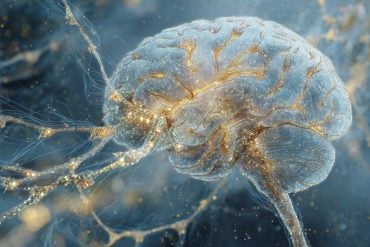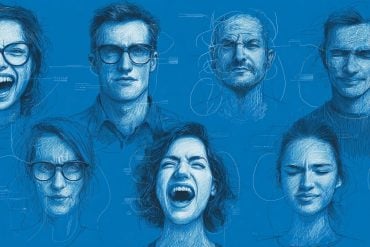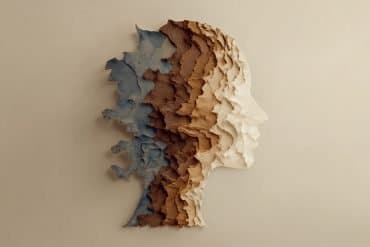Summary: Researchers report a chef’s skills and expertise are embodied in the cerebellum, an area of the brain associated with motor function and cognition.
Source: IBFM.
Researchers investigate whether the chef’s brain is different from general population. They report that chef-related expertise has shaped brain anatomy in a way to become faster in some motor and cognitive realms.
The process that makes people faster, more accurately and efficiently is called skill learning. To achieve this, the brain needs to change, establishing new stable connections between neural populations with the resulting increased responsiveness of specific brain areas. Whether “cooking skills” are embodied in a specific neural circuitry has never been investigated.
In a study published today in the journal PLOS ONE, a team of researchers from Italy together with the Italian Federation of Chefs, for the first time, unravels neurobiological aspects of the chef’s brain.

Generally, “experts” are people who have had many years of training in a specific domain. The relationship between the morphology and functions of the human brain has attracted the interest of neuroscientists since the popular investigation on the Einstein’s brain.
“The majority of findings in this field of study have relied on musicians who have served as a model for studying how expertise can shape human brain”, explains Antonio Cerasa from the National Research Council. “However, other career groups such as, mathematicians, taxi-drivers, noses, rock climbers, chess-players and sommeliers, are also characterized by similar neural plasticity changes”.
Eleven Italian head chefs with long-term brigade management expertise and 11 non-experts underwent cognitive and neuroimaging evaluations.
“Neuroimaging analysis revealed that chef’s expertise is embodied in the cerebellum” adds Antonio Cerasa. “The cerebellum is one of the principal brain regions involved in motor /cognitive learning. It is well-known that the typical process of acquiring new repertoires of movements and skills to perform them through practice is specifically embodied in this part of brain. The magnitude of the brigade staff as well as the elevated performance in the motor/cognitive planning test positively correlated with the enlargement of the cerebellum: more people to synchronize and faster response in planning plates may induce cerebellar neural plasticity.
“This neuroscientific work testifies the value of the pattern laid down by Auguste Escoffier” – adds Carmelo Fabbricatore, President of the FIC section of Calabria “who, over one century ago, stated that to become chef we never stop learning”.
“However, these data should be handled with care” – concludes Cerasa –“since there is considerable variability among top experts regarding the level of proficiency they achieve and the way in which we can objectively measured it”
NeuroscienceNews would like to thank Antonio Cerasa for submitting this article to us for inclusion.
Source: Antonio Cerasa – IBFM
Image Source: NeuroscienceNews.com image is credited to Simonluca Spandanuda.
Original Research: Full open access research for “Increased cerebellar gray matter volume in head chefs” by Antonio Cerasa, Alessia Sarica, Iolanda Martino, Carmelo Fabbricatore, Francesco Tomaiuolo, Federico Rocca, Manuela Caracciolo, and Aldo Quattrone in PLOS ONE. Published online February 9 2017 doi:10.1371/journal.pone.0171457
[cbtabs][cbtab title=”MLA”]IBFM “The Chef’s Brain.” NeuroscienceNews. NeuroscienceNews, 4 March 2017.
<https://neurosciencenews.com/chef-neurobiology-6196/>.[/cbtab][cbtab title=”APA”]IBFM (2017, March 4). The Chef’s Brain. NeuroscienceNew. Retrieved March 4, 2017 from https://neurosciencenews.com/chef-neurobiology-6196/[/cbtab][cbtab title=”Chicago”]IBFM “The Chef’s Brain.” https://neurosciencenews.com/chef-neurobiology-6196/ (accessed March 4, 2017).[/cbtab][/cbtabs]
Abstract
Increased cerebellar gray matter volume in head chefs
Objective
Chefs exert expert motor and cognitive performances on a daily basis. Neuroimaging has clearly shown that that long-term skill learning (i.e., athletes, musicians, chess player or sommeliers) induces plastic changes in the brain thus enabling tasks to be performed faster and more accurately. How a chef’s expertise is embodied in a specific neural network has never been investigated.
Methods
Eleven Italian head chefs with long-term brigade management expertise and 11 demographically-/ psychologically- matched non-experts underwent morphological evaluations.
Results
Voxel-based analysis performed with SUIT, as well as, automated volumetric measurement assessed with Freesurfer, revealed increased gray matter volume in the cerebellum in chefs compared to non-experts. The most significant changes were detected in the anterior vermis and the posterior cerebellar lobule. The magnitude of the brigade staff and the higher performance in the Tower of London test correlated with these specific gray matter increases, respectively.
Conclusions
We found that chefs are characterized by an anatomical variability involving the cerebellum. This confirms the role of this region in the development of similar expert brains characterized by learning dexterous skills, such as pianists, rock climbers and basketball players. However, the nature of the cellular events underlying the detected morphological differences remains an open question.
“Increased cerebellar gray matter volume in head chefs” by Antonio Cerasa, Alessia Sarica, Iolanda Martino, Carmelo Fabbricatore, Francesco Tomaiuolo, Federico Rocca, Manuela Caracciolo, and Aldo Quattrone in PLOS ONE. Published online February 9 2017 doi:10.1371/journal.pone.0171457







